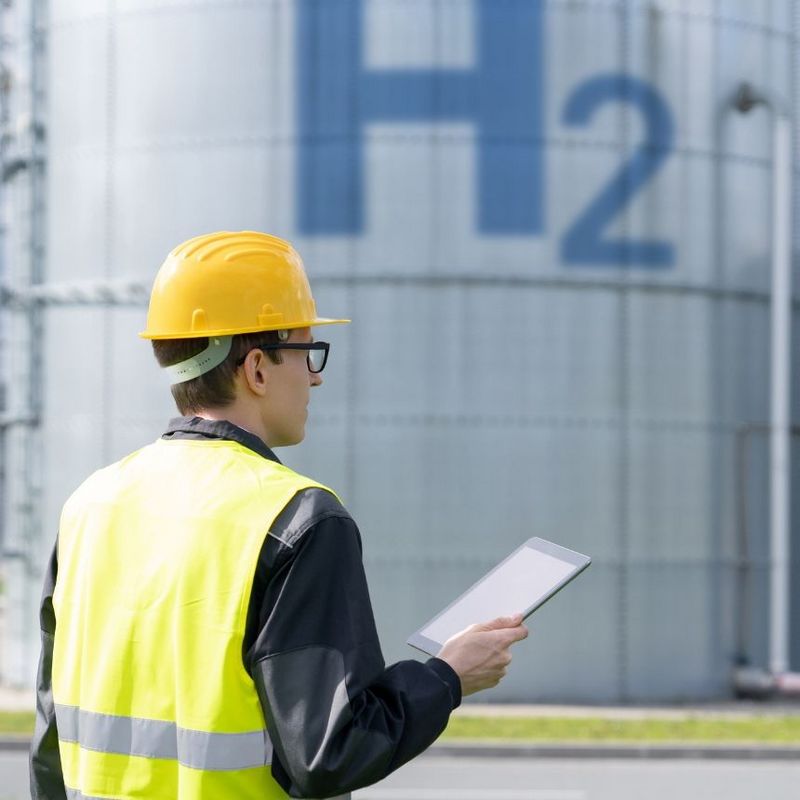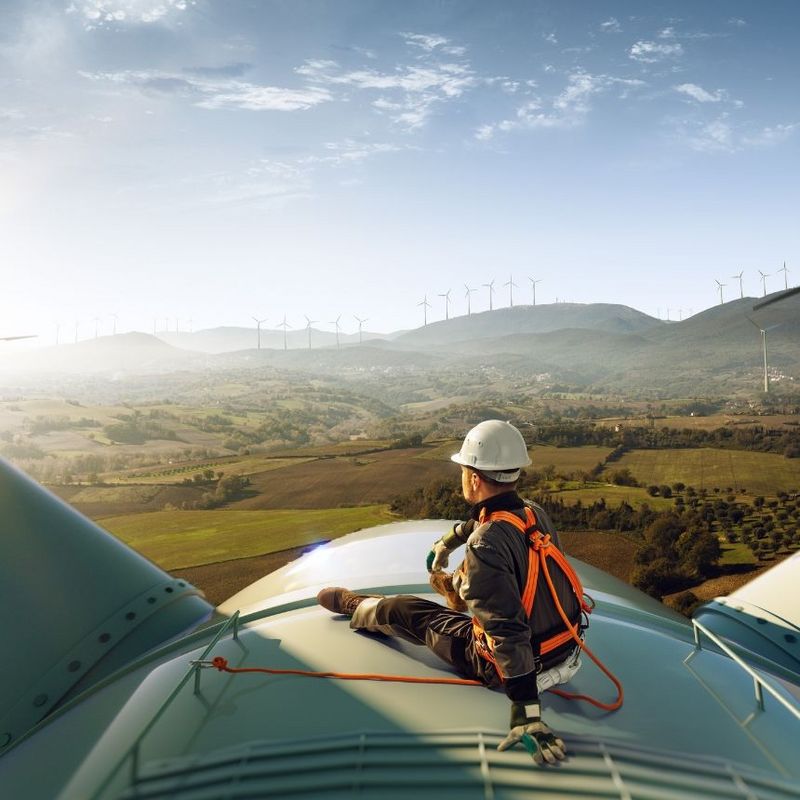28. September 2023
LNG terminals are in use all over the world. In Germany, installations of this kind for liquid natural gas are already in operation in Wilhelmshaven, Brunsbüttel and Lubmin, with others in the pipeline for Stade and Mukran on the island of Rügen. Even though it is already clear that LNG is a transition technology, which is due to be replaced by green hydrogen. Dagmar Hildebrandt, project manager at TÜV NORD, explains how liquid natural gas terminals are being planned for later use with hydrogen.
#explore: Ms. Hildebrandt, the first privately financed LNG terminal went into operation in Lubmin on the Baltic coast early this year. The idea is now for a further terminal to be built in the industrial port of Mukran. How are these plans looking right now?
Dagmar Hildebrandt: The LNG terminal in the industrial port of Mukran is being planned by Deutsche ReGas, which is also the operator of the Lubmin terminal. From the point of view of the German government, this is required to guarantee security of supply of natural gas in Germany and to prevent supply bottlenecks and price hikes. This is why the terminal is scheduled to become operational in the winter of 2023/24. Two regasification ships (FSRU, or Floating Storage and Regasification Units for short) will convert the liquid natural gas back into its gaseous state. Unlike Lubmin, the port of Mukran is not yet connected to the German natural gas grid. It’s for this reason that grid operator GASCADE is planning a 51-kilometre pipeline to run from Lubmin to Mukran which will at some point also be usable for the transport of hydrogen.
The aspiration is for the new LNG terminals to be designed from the outset for later repurposing to carry hydrogen. What’s the story with these hydrogen projects?
Deutsche ReGas is planning to produce green hydrogen in Lubmin in two stages, with an output ranging from 200 to 500 megawatts. Four other companies are also planning to produce green hydrogen at the same site. All these installations combined will have a capacity of two gigawatts. That would be one-fifth of the production capacity planned by the German government between now and 2030: a pretty significant amount, in other words. Under this scheme, Mecklenburg-Western Pomerania would change from being just a transit state for natural gas to being a major production site for hydrogen, allowing the state to benefit economically from the energy transition.
What are the arguments in favour of Lubmin as a major site for hydrogen production?
Lubmin simply has the outstanding conditions needed for this. It’s where the power cables from major Baltic wind farms come ashore. The electrolysers can be supplied with energy from regenerative sources, which is the precondition for green hydrogen which is good for the climate. Not only that, but Lubmin, as a former industrial location, enjoys access to the German high-voltage grid and offers lots of usable undeveloped space. And finally, it will be possible to feed the hydrogen produced here directly into the German gas grid without all the expense of interim storage. This is because GASCADE, the long-distance gas grid operator, intends to convert one of the existing pipelines which come ashore at Lubmin and have until now been transporting natural gas from Nord-Stream 1, into a hydrogen pipeline. The plan is to convert the first section to Berlin as early as 2025; in a further step, Leipzig and Halle will be connected with the local chemical industry sites. Hesse and Rhineland-Palatinate should follow in 2028, to be joined by Baden-Württemberg by 2030. In parallel, GASCADE aims to build a connection to the national natural gas grid at Lubmin by 2027. The Danish government is pursuing the plan of turning Bornholm into an “energy island”, on which copious amounts of hydrogen will be produced from wind energy and exported.
About
Dagmar Hildebrandt is a project manager and regional director at TÜV NORD. The graduate chemist, who holds a doctorate in geo-ecology, works in the field of environmental protection issues in complex major projects.
Electrolysis plant: New LNG terminals should be designed from the outset for later hydrogen use.
Are there more plans for hydrogen in the context of these LNG terminals?
Once the electrolyser has been built in Lubmin, Deutsche ReGas is also planning to run an electrolysis plant in the port of Mukran. The possibility is also being considered of installing a tank system at the port to store green ammonia. This is relevant because Germany will in the future also use tankers to import green hydrogen. However, gaseous hydrogen is unsuitable for marine transport because of its low density. A system is currently under development to split green ammonia into its component elements on the regasification ships, as their tanks can also be used for the interim storage of this compound of nitrogen and hydrogen. Both the owner and the operator of these terminals are of course aware that LNG is a transition technology and are very interested in their potential long-term use for ammonia storage.
What is your role in these projects?
In the first stage of the process at the Lubmin LNG terminal, I was commissioned by the authorities to take on the role of project manager. In collaboration with my team, I’m now supporting the project’s sponsor – Deutsche ReGas – in its navigation of the approvals process for the Mukran terminal under the German Immission Control Act. We produce airborne contamination forecasts, noise forecasts and application documents.
What kinds of processes do you get in an LNG terminal of this kind? What do you have to watch out for?
LNG has a temperature of -162 degrees. It’s heated in the regasification ships with the aid of heat exchangers and converted back into gas. In the process, part of the natural gas is combusted, which gives rise to nitrogen oxides. Evidence in the form of airborne contamination forecasts must be produced to show that the resulting nitrogen oxide deposits are within the statutory limits. In and around nature conservation areas like Lubmin and Mukran, the requirements and tests are especially stringent so as to avoid possible impacts on the flora and fauna. Another aspect is the noise issue. The actual regasification process isn’t noisy. But it does need electricity, which the ships currently produce with generators. These generators produce low-frequency sounds – in other words, they generate a rumbling noise, which can really disturb the local population. This is why Deutsche ReGas has installed additional sound absorbers in the Lubmin terminal and wants to completely supply the FSRU with on-shore power, which will eliminate a key source of noise.
The infrastructure in Lubmin (district of Vorpommern-Greifswald) can also be used for feeding hydrogen into the grid.
And how does this look with the planned electrolysers?
Here we have a completely different situation. The legislature is currently consulting on the assessment of electrolysers. Electrolysers generate neither noise nor airborne contaminants. They can be seen as chemical conversion plants or other kinds of plant. So, my assumption is that the German government will soon enact a law to make it much easier to build and operate electrolysers. After all, this is a key requirement for the realisation of Germany’s ambitious hydrogen strategy.






